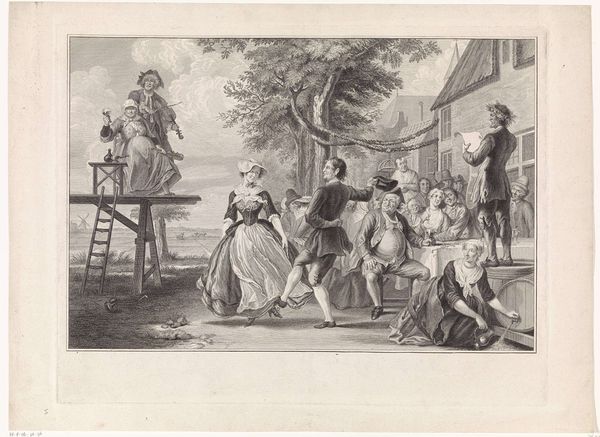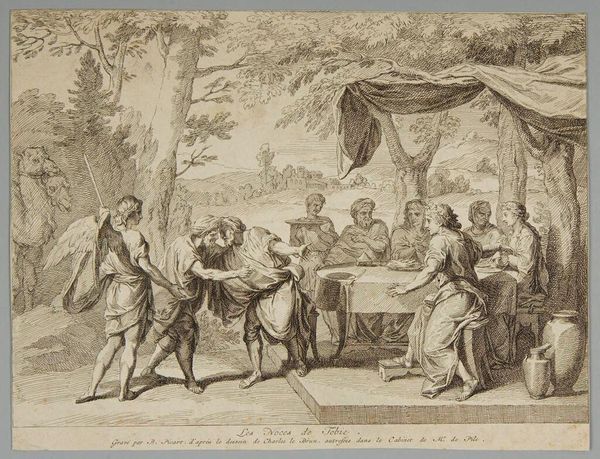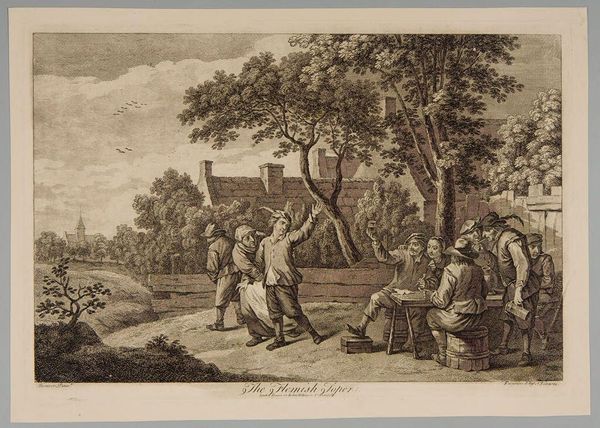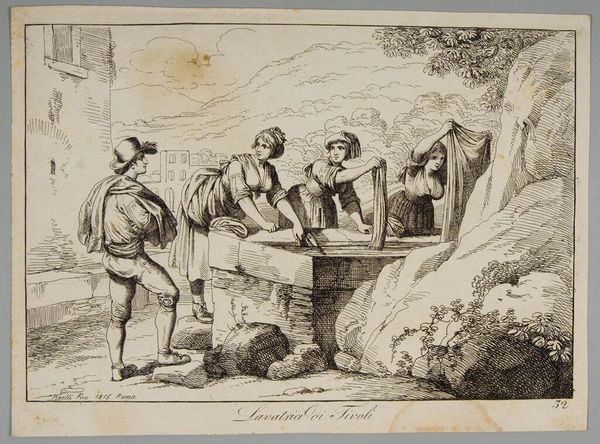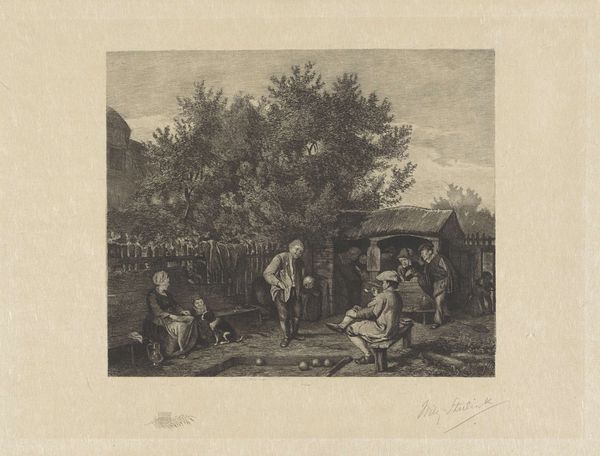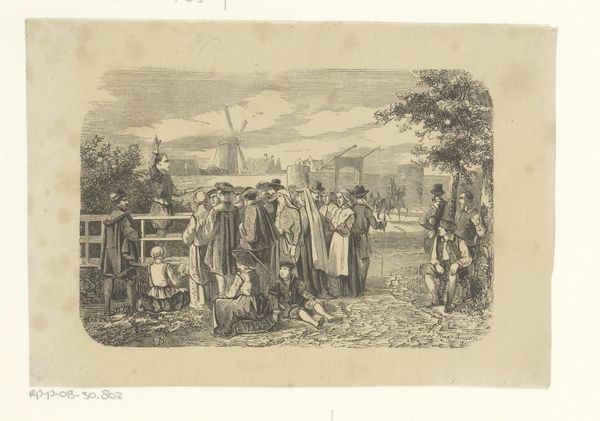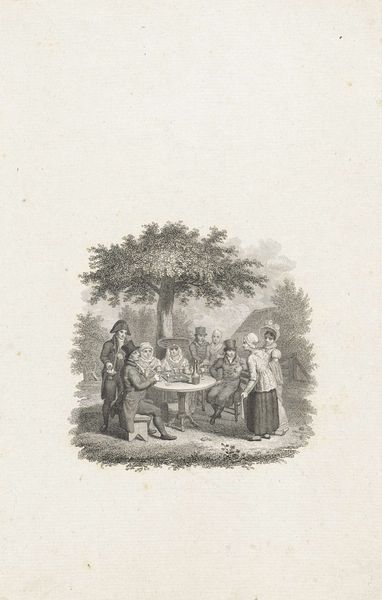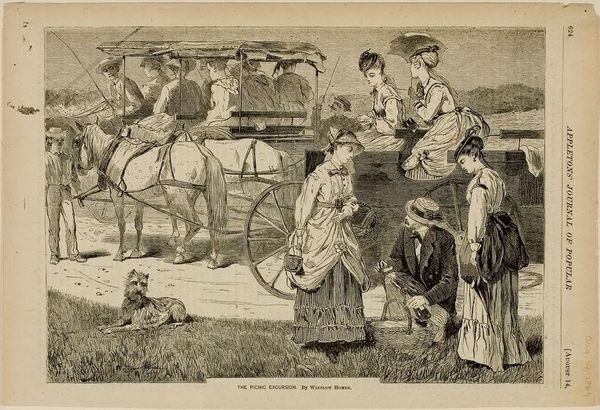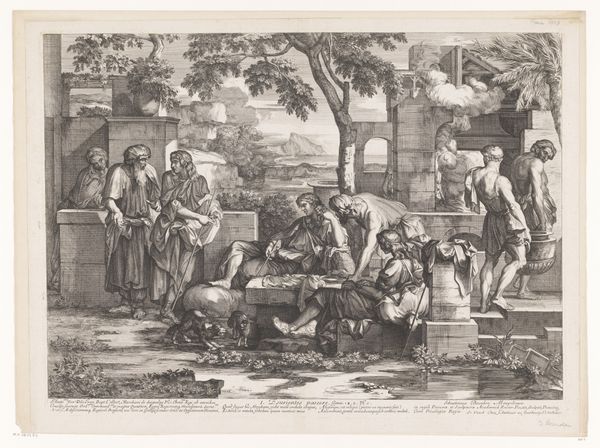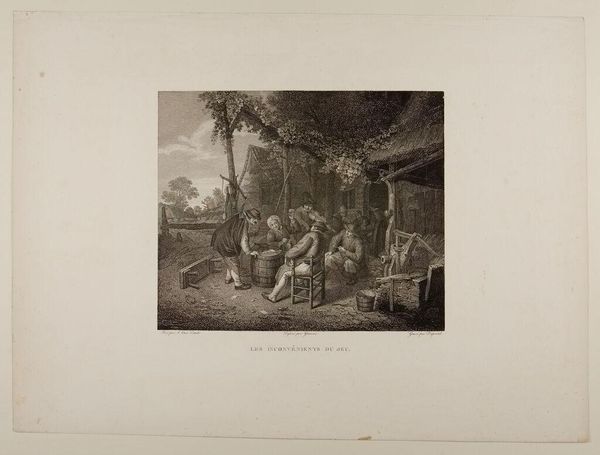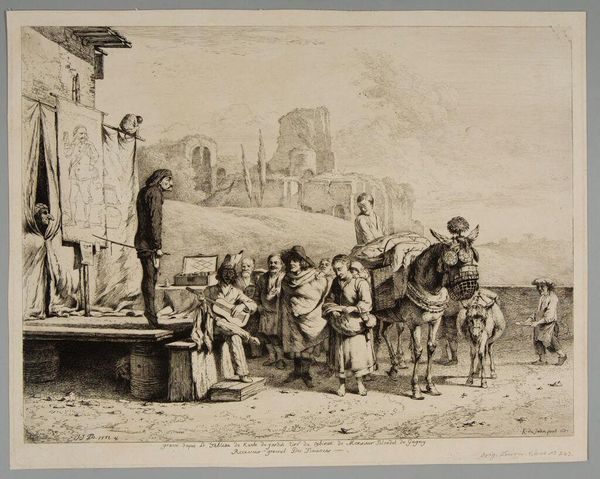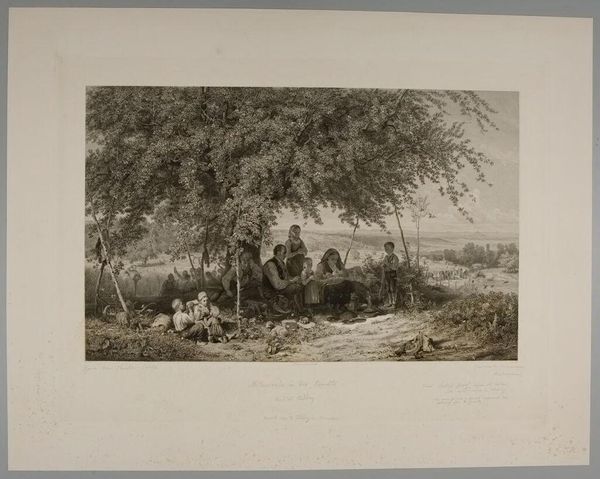
Copyright: CC0 1.0
Curator: This is "Baccanale di Romi in Testaccio" by Bartolomeo Pinelli. The artist created this etching in 1815. It currently resides in the Harvard Art Museums. Editor: It strikes me as an informal scene, almost theatrical in its arrangement. A group of people gathered al fresco, perhaps enjoying a meal and music. The details are quite intricate! Curator: Pinelli often depicted Roman life, especially that of the working class. Here, the setting in Testaccio suggests a festive gathering, likely involving food and drink produced and consumed locally. Editor: Exactly. The materiality of the setting—the rough table, the simple garments—speaks to a lifestyle grounded in the resources at hand. This isn't about high society, but the laboring class at leisure. Curator: The composition itself plays a role. The figures are arranged to engage with one another, but also with the viewer. It invites the viewer to consider the social dynamics inherent in these gatherings. Editor: I find myself thinking about the role of such imagery in shaping perceptions of Roman identity, how Pinelli's work contributed to an understanding—or perhaps a romanticizing—of local traditions and social structures. Curator: Precisely, it’s a complex interplay between representation, social class, and the creation of cultural narratives within a specific historical framework. Editor: Indeed, looking closer reveals a snapshot into the lived experiences and the very fabric of Roman society during this era.
Comments
No comments
Be the first to comment and join the conversation on the ultimate creative platform.
